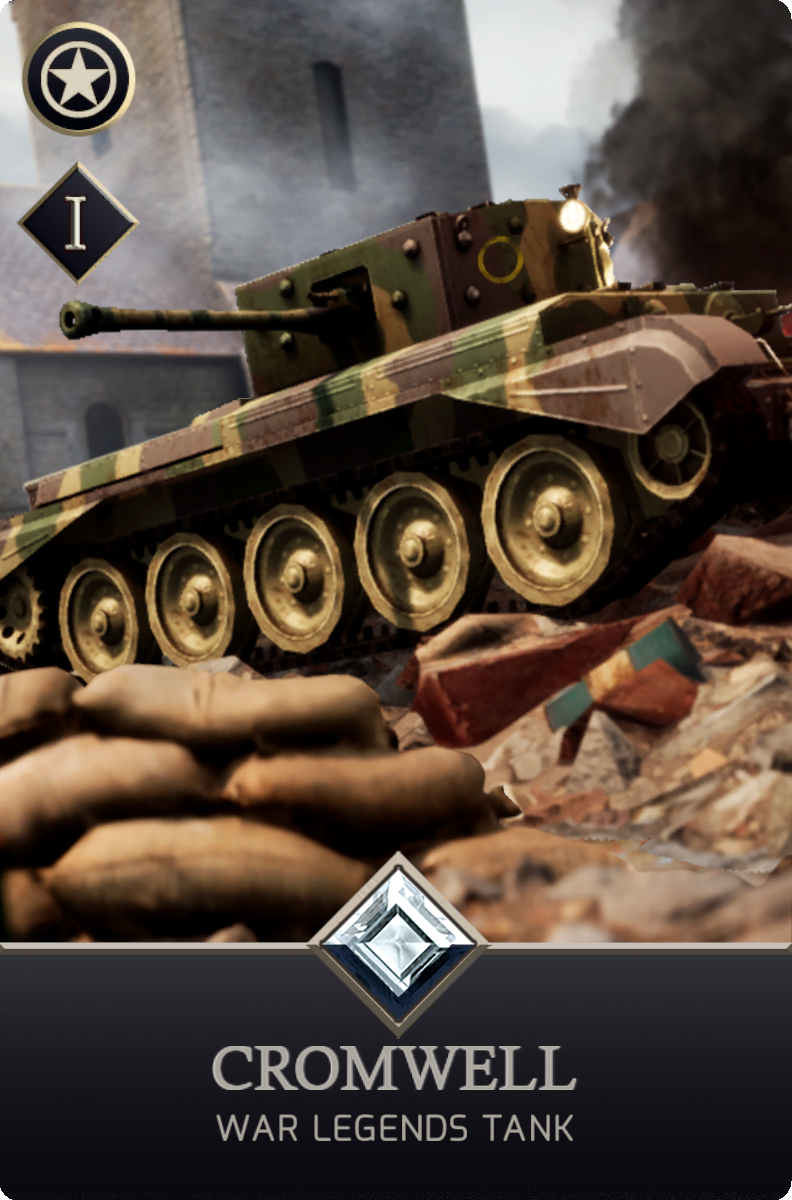


Tank Background
The Cromwell is arguably the best known, produced and successful cruiser lineage started in 1936, until the Comet in late 1944. War priorities spawned three tanks sharing the same design but different engines. The Cromwell, with Rolls Royce Meteor ( adapted from the Merlin, the Spitfire’s engine) was on the next level in mobility and reliability. It was the only active in Europe, the other two were being used to train and as special purpose tanks.
The three tanks were supposed to replace the Crusader. The latter was seen as a good tank in 1940 but obsolete in protection and firepower. In 1941 the designs for the Cromwell I were submitted and Roll Royce chose it early 1942 to develop the engine. Nuffield rushed the production of Cromwell I mostly done with Crusaders components, although a few pieces were new.
Merlin was an engine legend, not only because of the Spitfire but also because of his qualities.
The Roll-Royce itself was legendary for the horsepower that surpassed other engines.
The Meteor was the version intended to use on tanks, it was a V12 water-cooled gasoline engine, in order to be adapted it had to lose its supercharger, reduction gear and equipment reduced for the camshaft to ensure simple construction.
The hull consisted of riveted beams resorted to welding, the armor plates were bolted on the turret.The front armor comprised a three part beak plate and a flat armor plate. The driver had a one-piece hatch opening and two built periscopes.
The box turret was above the central fighting compartment, isolated from the front and the engines.
The main gun and the coaxial Besa were in front of the plate opening. It has 6 plates made of cast hardened steel. The gunner operator had his own periscope and a main visor.
The Cromwell swapped the QF 6-pdr for the ROQF 75 mm, which has a design to the fire ammunition of the US M3 75 mm. This adaptation also meant that the 75 mm used the same mounting as the QF 6-pdr and the crew and management was unchanged.
Besides Leyland, other British firms contributed to the Crowell and Centaur production such as: LMS Railway, Morris Motors, Metro-Cammel. Birmingham Railway Carriage, Wagon Company and English Electric.
The A27Ms were available in the beginning of 1944 but non on British soil. The series kept refining until D-Day. The first time Cromwell saw action was during Operation Overlord, however at the beginning and until the Falaise battles, they were struggling with the hedgerows and narrow lanes. After August, the terrain favored mobility and speed, Cromwell showed all its qualities.
Cromwell was used in the Netherlands and Germany until V-Day in May 1945.
It was also used in the War of Independence ( 1948-1949 ).
It was soon discovered that neither the armor or the fire power was no match for the Tiger and Panther. By the end of 1944, British engineers upgraded the Cromwell but its was too late and it was not able to face the new events.
In 1945, Centurion ( Cromwell VIII - A27L ) was one of the most successful tanks ever designed.








